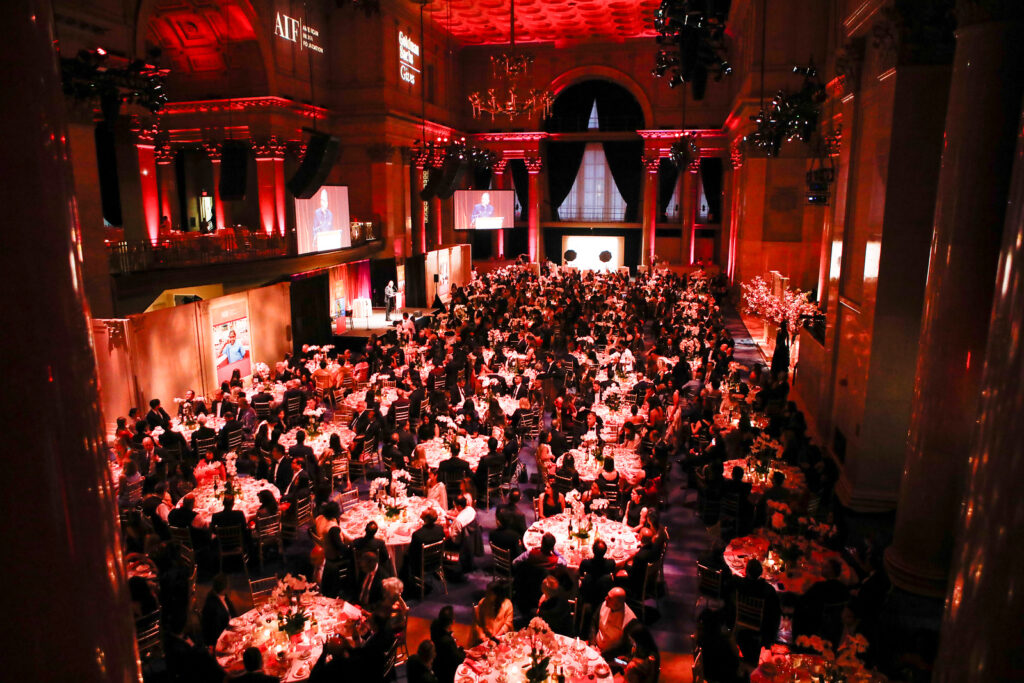As the crisp air and colorful foliage of fall approach, so does one of the busiest and most vibrant seasons for events. Whether you're orchestrating a black-tie gala, hosting a corporate celebration, or coordinating a charity run/walk with thousands of participants, getting ahead on your fall event season planning is crucial for ensuring a successful and stress-free experience. The earlier you start, the more seamless your events will be, allowing you to fully enjoy the season and all it has to offer. Here’s a comprehensive guide to help you stay ahead of the curve and make your fall events truly memorable.
1. Start Planning Early
The key to a successful event lies in early preparation. The sooner you begin, the more time you have to handle any unexpected challenges that may arise. Start by setting clear goals for your event—what do you want to achieve? Whether it’s raising funds, celebrating milestones, or fostering community engagement, having a clear vision will guide your planning process.
Next, establish a budget. Understanding your financial limits will help you make informed decisions when booking vendors, selecting venues, and planning marketing efforts. Speaking of venues, fall is a popular time for events, and the most sought-after locations are often booked months in advance. To avoid the stress of last-minute venue hunting, secure your location as early as possible.
2. Create a Detailed Timeline
A well-structured timeline is your best friend in the planning process. Start by listing every task that needs to be accomplished, from the initial concept to the final wrap-up. Break these tasks down into manageable steps and assign deadlines for each one. A visual timeline—whether it’s on a digital calendar or a physical planner—can help you stay on track and ensure that no detail is overlooked.
Include regular check-ins with your team to monitor progress and address any issues promptly. Consider incorporating buffer times into your schedule to accommodate any unforeseen delays. This will give you the flexibility to handle last-minute changes without throwing off your entire plan.
3. Secure Your Vendors Early
Just as venues are in high demand during the fall, so are top-tier vendors. Whether you need caterers, photographers, entertainers, or equipment rentals, it’s important to book them well in advance. Start by researching vendors who align with your event’s theme and budget. Request proposals, read reviews, and if possible, meet with them in person to discuss your vision.
Once you’ve made your selections, secure contracts as soon as possible. This not only locks in your preferred vendors but also allows you to finalize other aspects of your event with confidence. Remember to keep in close communication with your vendors throughout the planning process to ensure everyone is on the same page and to address any changes that may come up.
4. Plan for Weather Variability
Fall weather is notoriously unpredictable, and if your event is outdoors, it’s crucial to have contingency plans in place. Even if the forecast looks favorable, unexpected rain or a sudden drop in temperature can quickly change the atmosphere of your event.
Consider renting tents or marquees to provide shelter in case of rain, and have portable heaters on standby if temperatures dip. If possible, identify an indoor alternative venue that can accommodate your guests at short notice. Additionally, offering amenities like a coat check or providing warm blankets can make a significant difference in your guests’ comfort and overall experience.
5. Promote Your Event Effectively
Promotion is the lifeblood of any successful event. Start by identifying your target audience and choosing the best channels to reach them. Social media is a powerful tool for creating buzz, so create engaging content that reflects the excitement and importance of your event. Regular updates, behind-the-scenes looks, and countdowns can help maintain momentum and keep your audience engaged.
Don’t overlook traditional marketing methods like flyers, posters, and direct mail, especially if your event caters to a local audience. Email campaigns are another effective way to reach your audience—send out save-the-dates, invitations, and reminders to keep your event top of mind.
For fundraising events, early outreach to potential honorees and co-chairs is essential. These individuals can leverage their networks to boost attendance and donations. By involving them early in the planning process, you give them ample time to strategize and engage their contacts.
6. Leverage Technology for Efficiency
In today’s digital age, technology can be your greatest ally in event planning. Utilize event management software to streamline tasks like registration, ticket sales, and guest communication. These platforms can help you keep track of RSVPs, manage payments, and even provide real-time updates to attendees.
Social media management tools can automate your promotional efforts, ensuring your content reaches the right audience at the right time. Additionally, consider using project management tools to coordinate with your team, track progress, and share important documents.
7. Focus on the Guest Experience
Ultimately, the success of your event hinges on the experience you provide for your guests. Think about the journey from start to finish—how will your guests feel from the moment they receive an invitation to the time they leave the event?
Personal touches, such as thoughtful welcome messages, well-curated playlists, and personalized name tags, can go a long way in making your event memorable. Consider the flow of the event as well—ensure there are no long gaps between activities and that your guests are entertained and engaged throughout.
8. Evaluate and Reflect Post-Event
Once the event is over, take the time to evaluate its success. Gather feedback from attendees, vendors, and your team to understand what worked well and what could be improved. Analyzing this information will not only help you gauge the effectiveness of your planning but will also provide valuable insights for future events.
In addition to feedback, review your budget to see if you stayed within your financial goals. Did you meet your attendance targets? Were your promotional efforts effective? Reflecting on these questions will help you refine your strategy for next time.
By starting early, staying organized, and paying attention to every detail, you can get ahead on your fall event season planning and ensure your events are a resounding success. Embrace the beauty and energy of the fall season as you plan and execute your events, and enjoy the rewarding experience of bringing people together in memorable ways. Happy planning, and savor every moment of this vibrant season!
Need some help getting started? Set up a free consultation with our experienced event planners today and propel your nonprofit to new heights!

